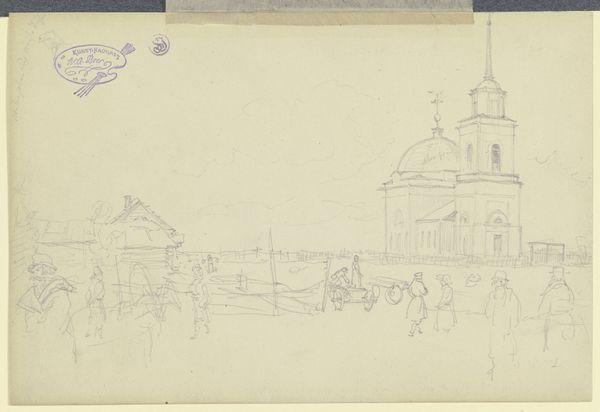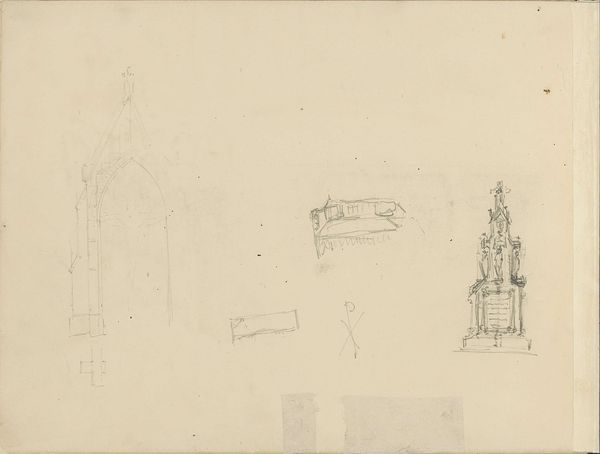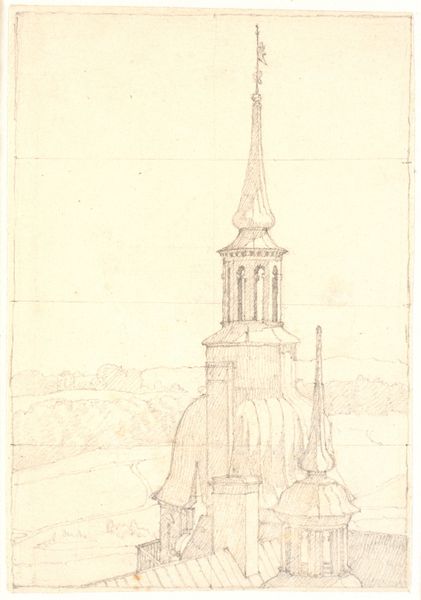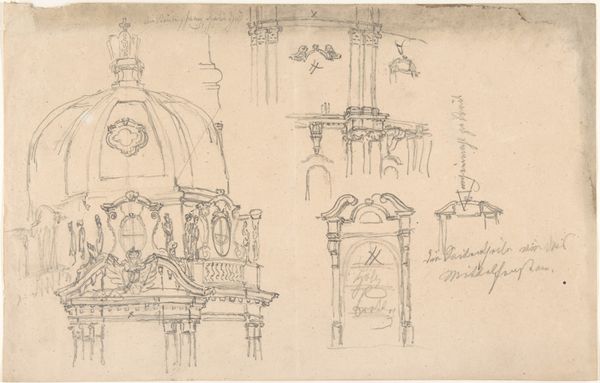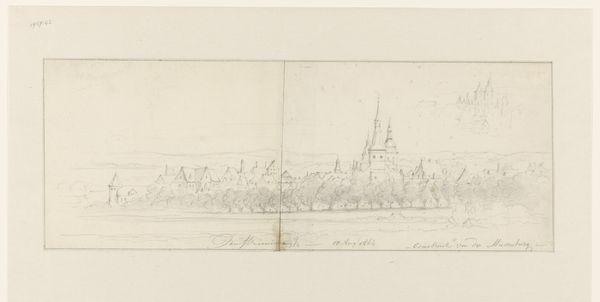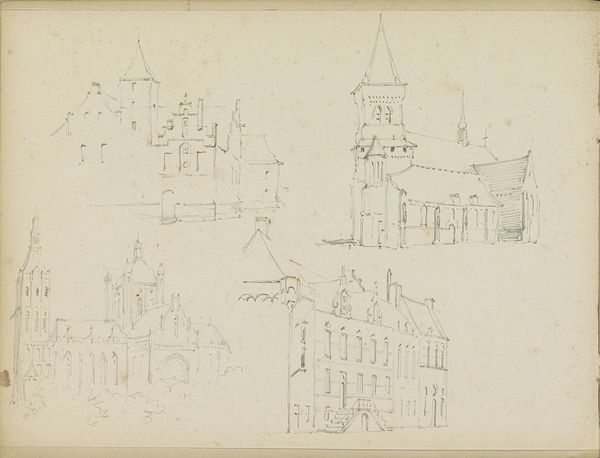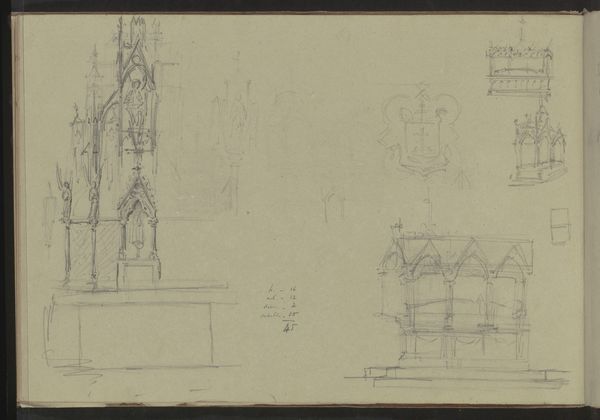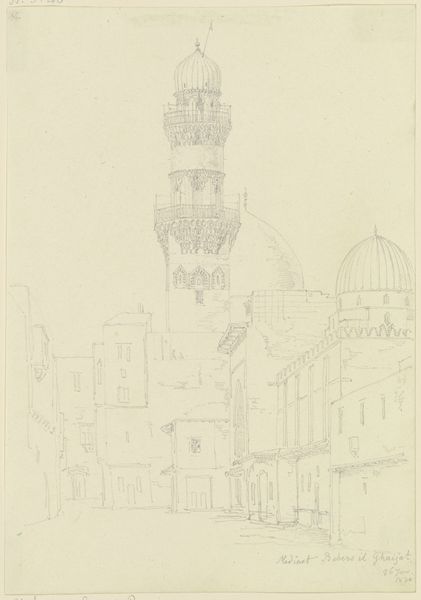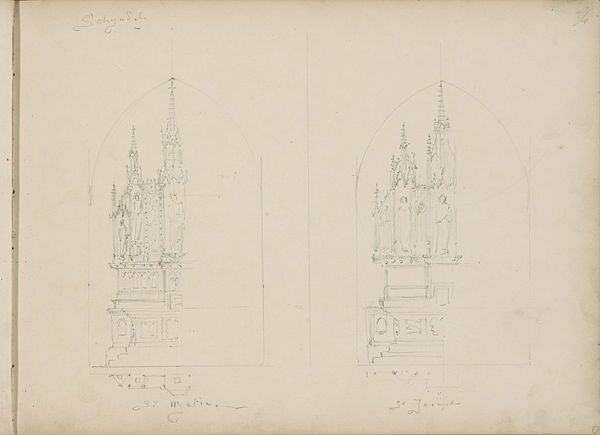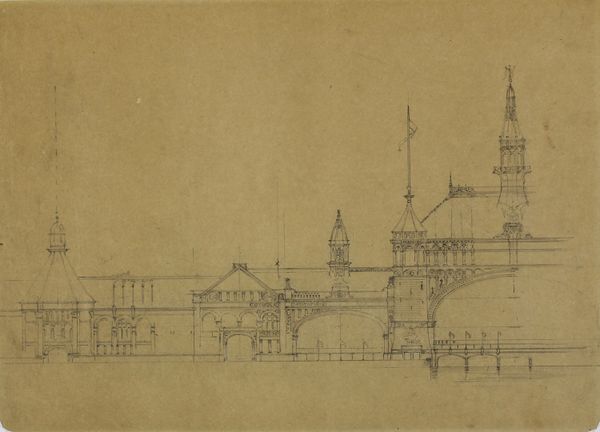
To kirkekupler og et firkantet tårn, tvillingekirkerne S. Maria di Monte Santo og S. Maria de' Miracoli på Piazza del Popolo Rom 1869
0:00
0:00
drawing, pencil
#
drawing
#
landscape
#
coloured pencil
#
pencil
#
cityscape
#
realism
Dimensions: 204 mm (height) x 115 mm (width) (bladmaal)
Editor: This sketch, "To kirkekupler og et firkantet tårn, tvillingekirkerne S. Maria di Monte Santo og S. Maria de' Miracoli på Piazza del Popolo Rom" by P.C. Skovgaard, dated 1869, captures the domes of the twin churches in Rome. It's delicate, almost ghostly, in its pencil lines. What strikes me is how the artist focused purely on the architectural forms, the geometry of the domes against the sky. What do you see in this piece? Curator: Immediately, the linearity captures my attention. Skovgaard meticulously outlines the architectural details, emphasizing form over texture. Note how the differing heights and shapes of the domes create a subtle asymmetry. The slight angling suggests movement or perhaps the artist capturing his immediate impression. Does this preliminary sketch hint to anything more beyond it’s seeming simple presentation? Editor: I see the angling more as a technique for establishing perspective. Could the differing levels and details signal differing structural approaches? The dome in the centre stands out due to its clearly delineated ornamentation. Curator: Indeed. Ornamentation is crucial here. Skovgaard carefully delineates their variation, which contributes to each building's distinct identity. One can read into the varying structures the expression of individualism from each designer and builder, if we wish. Considering its function, how might this drawing operate as a sign? Editor: It’s a record of architectural observation, of Skovgaard taking visual notes for himself, perhaps towards a painting. He emphasizes specific features which allows viewers to understand each dome uniquely. Curator: Precisely. The drawing becomes a study of architectural forms and their relationships. Skovgaard extracts these features, turning them into subjects. What’s remarkable about your observation, then, is that although Skovgaard includes inscriptions and labels, they do not describe material—suggesting an indifference towards realism. Do you agree that they enhance and direct the perspective towards its semiotic reading? Editor: Yes, definitely! I hadn't quite noticed it that way, but those simple linear shapes carry an enormous amount of intentional visual data. It almost transforms it from sketch into structured commentary. Curator: Indeed. From surface study it has offered both of us opportunities for meaningful reflection.
Comments
No comments
Be the first to comment and join the conversation on the ultimate creative platform.
